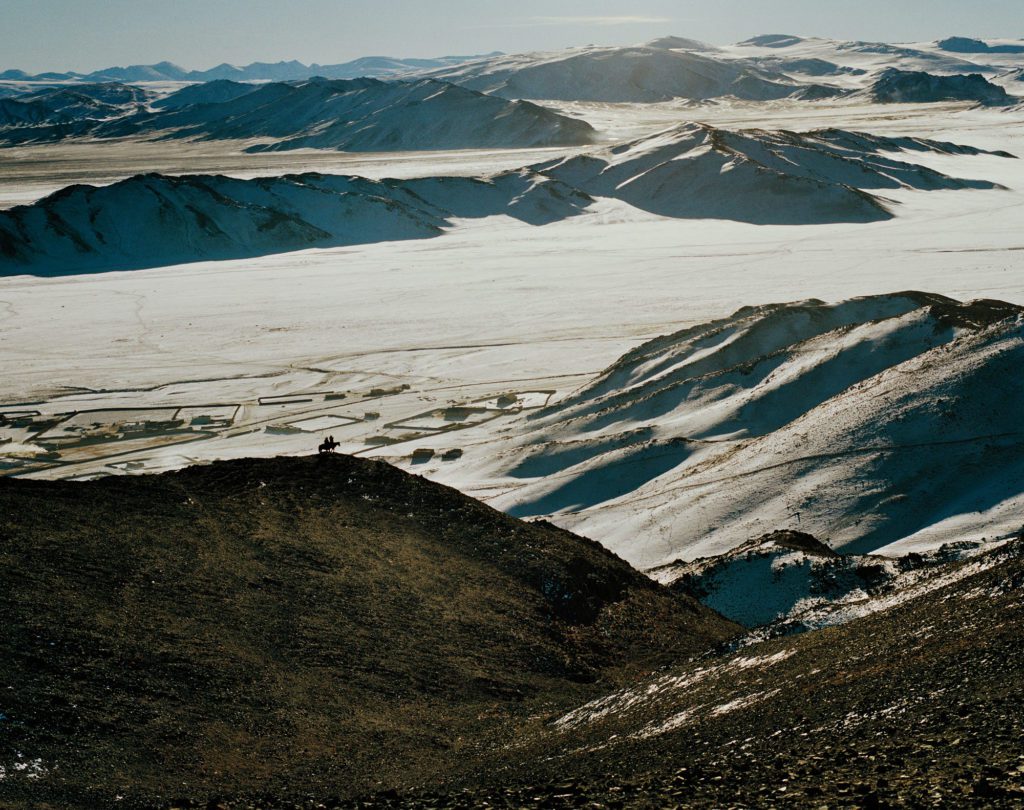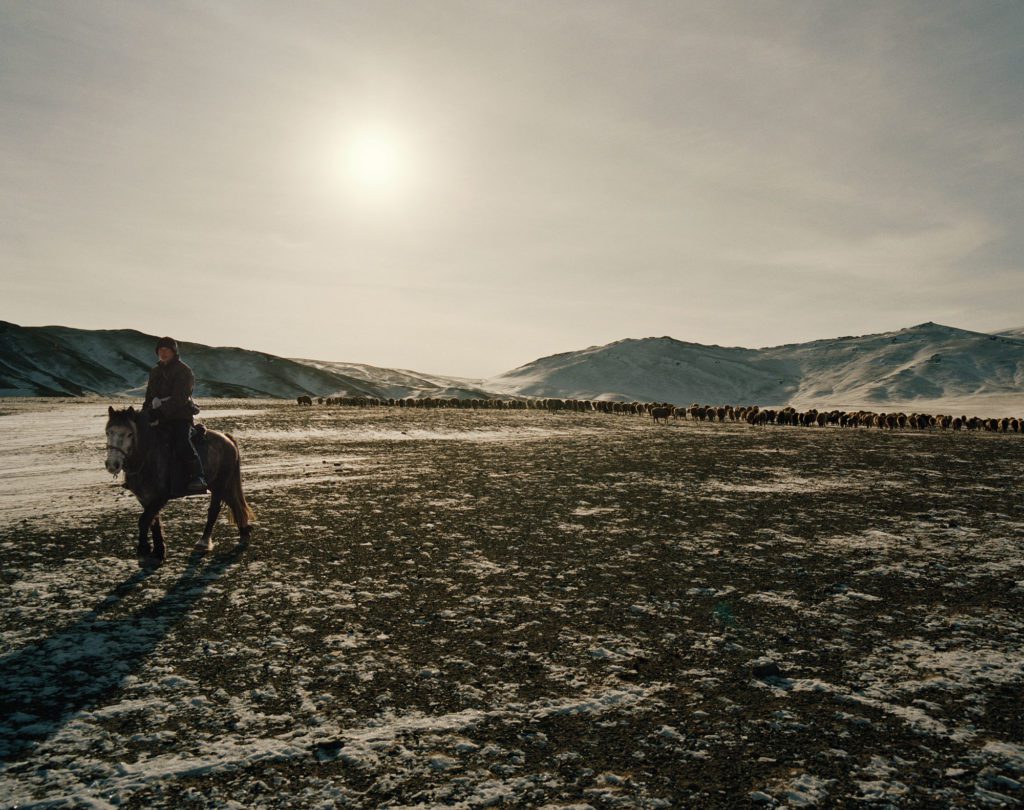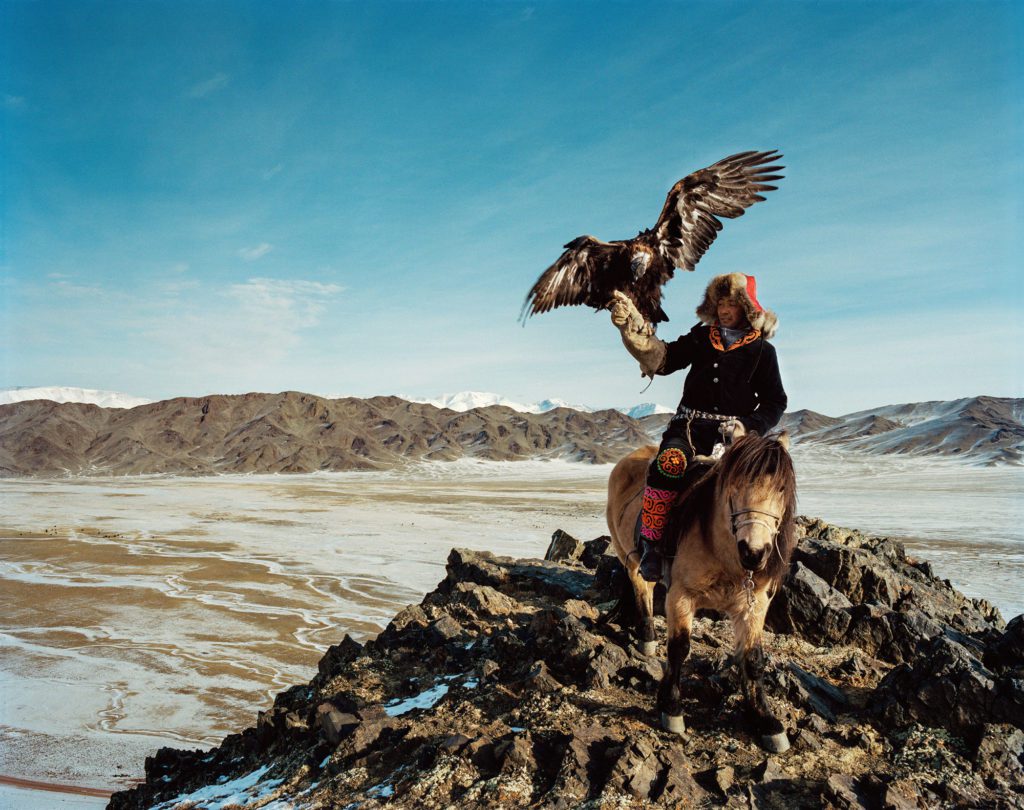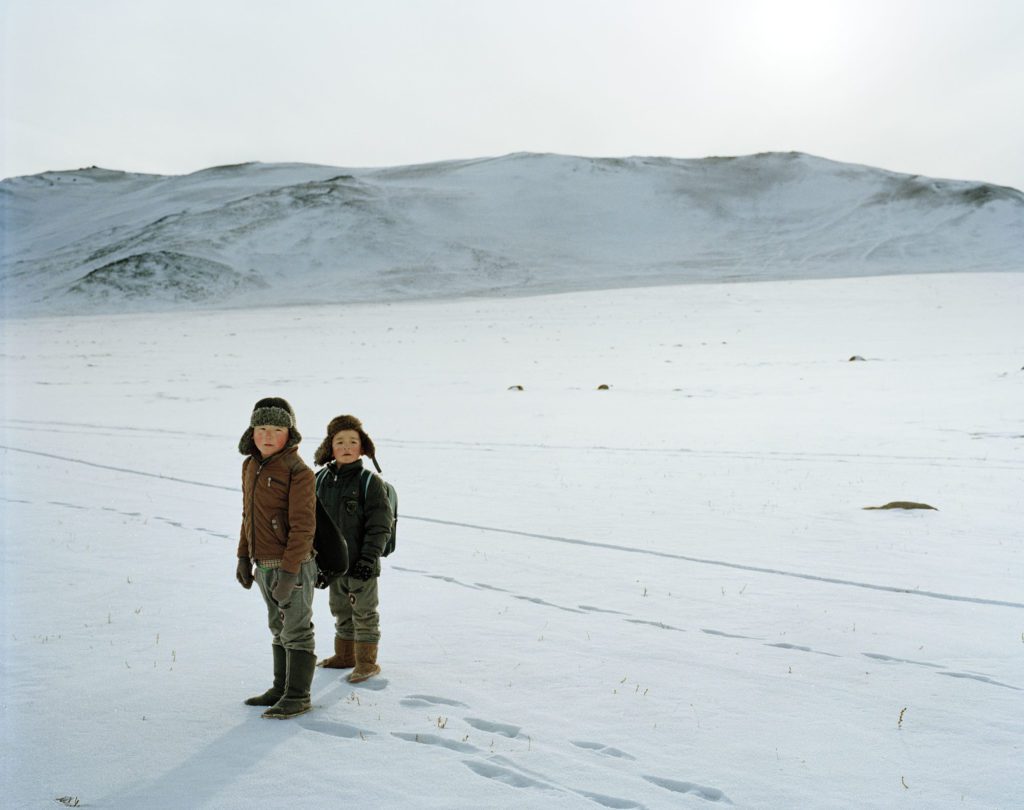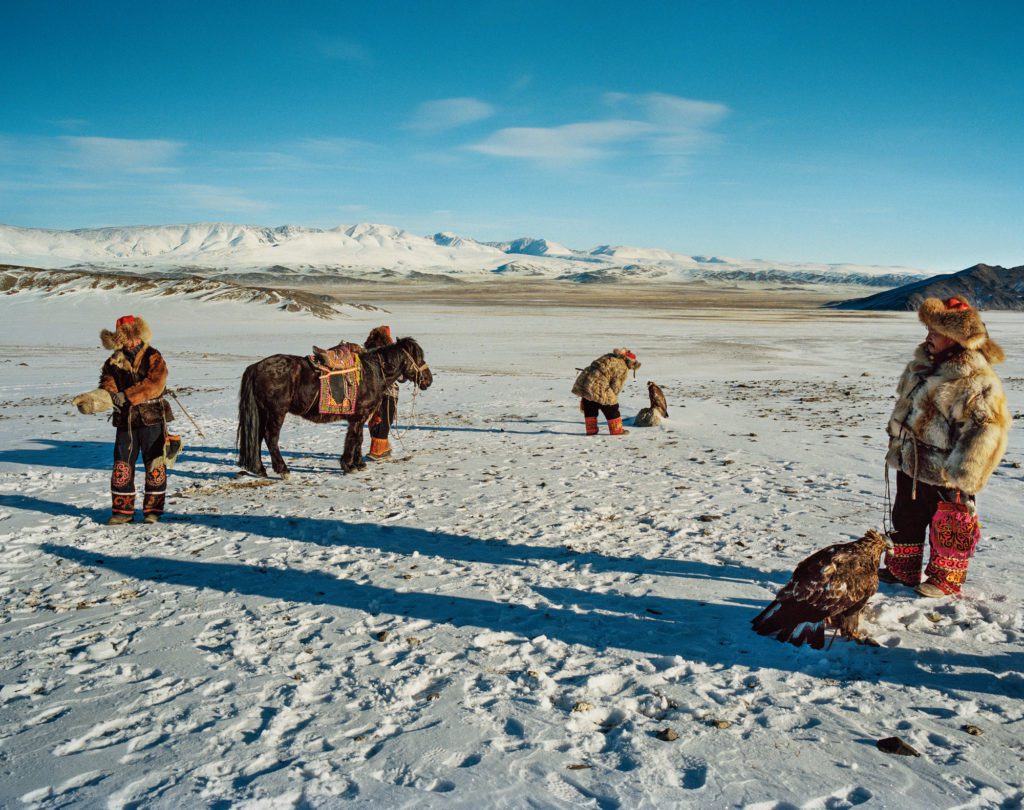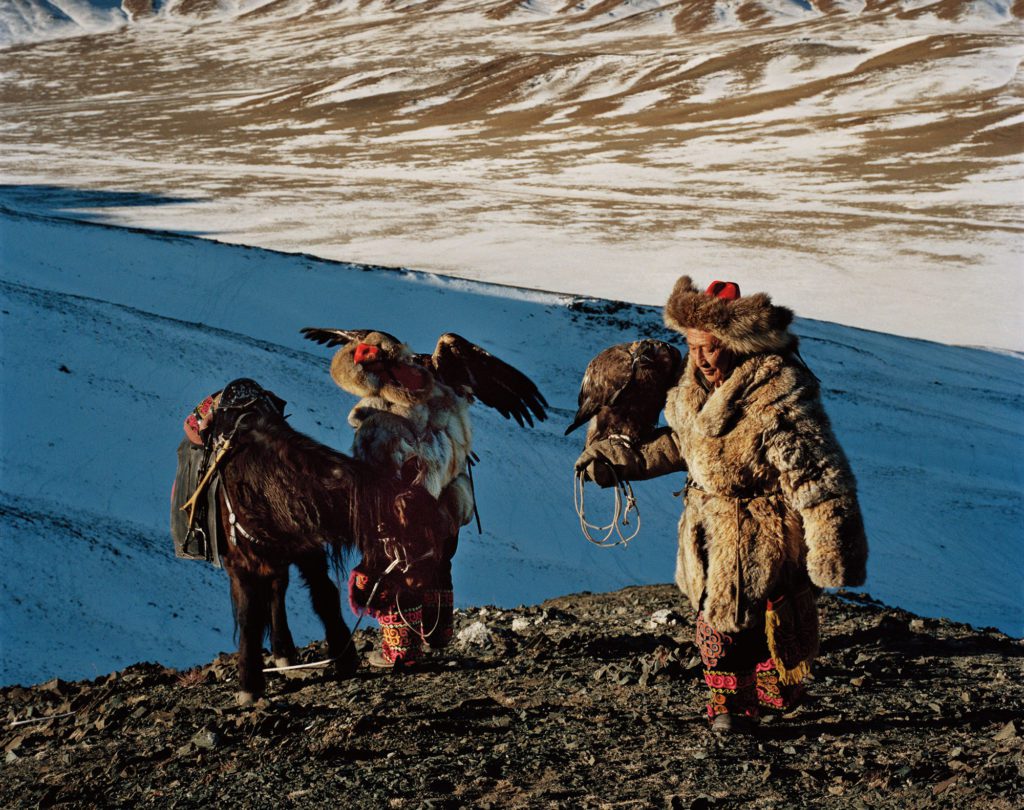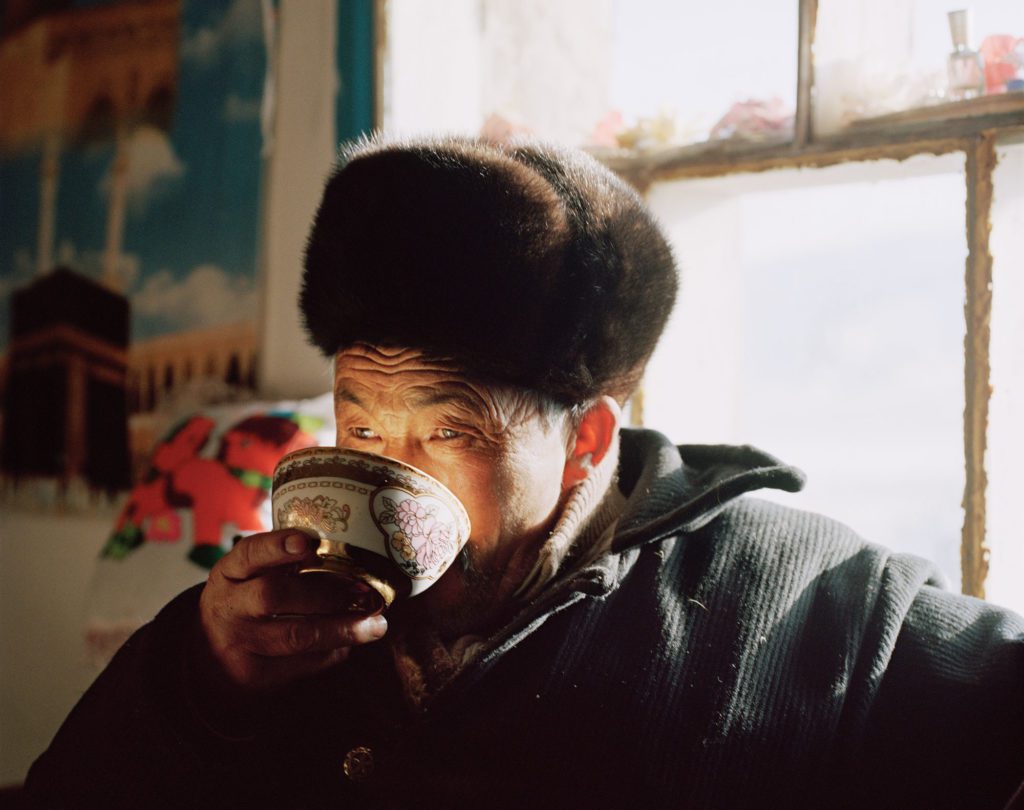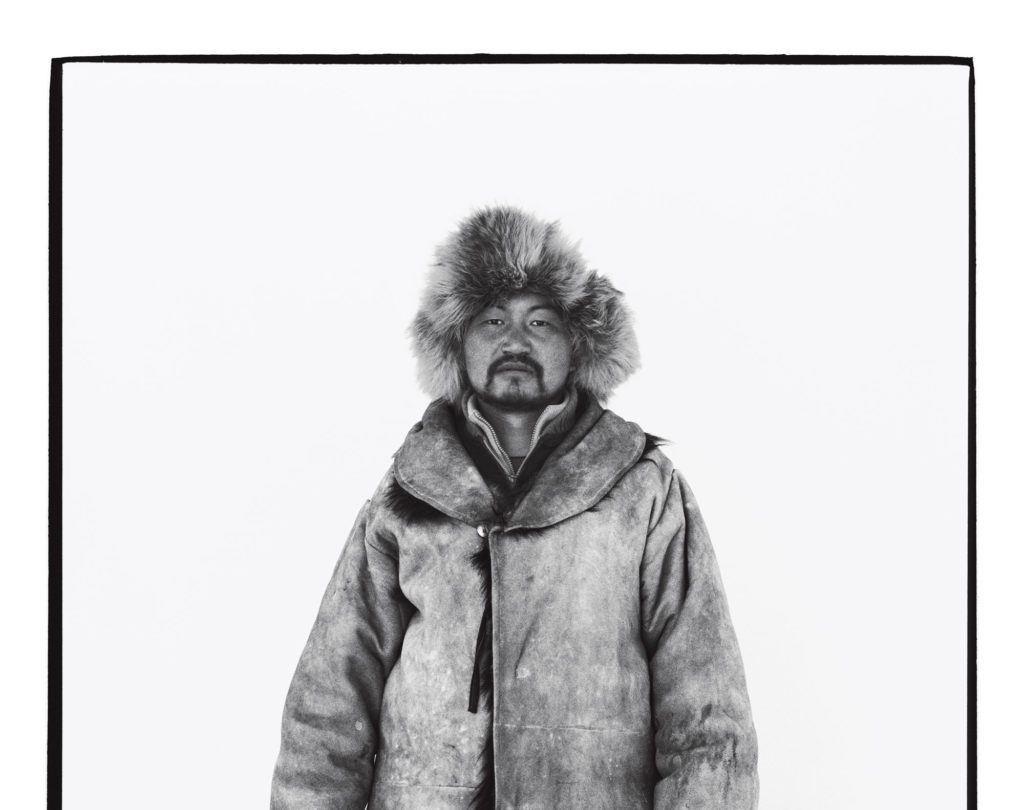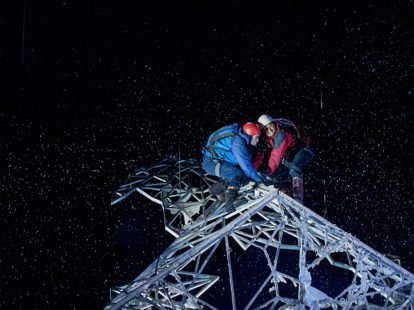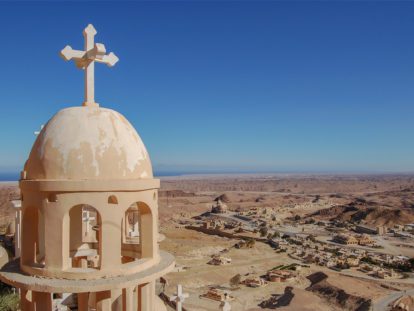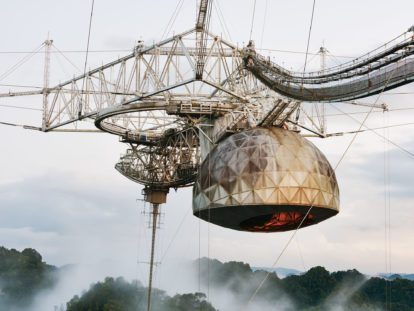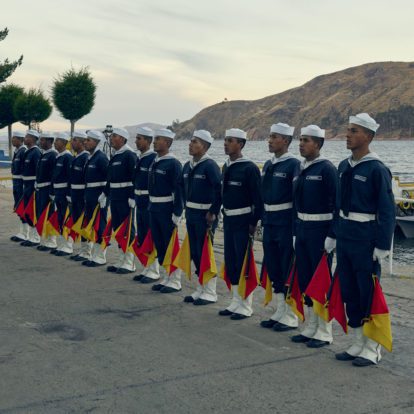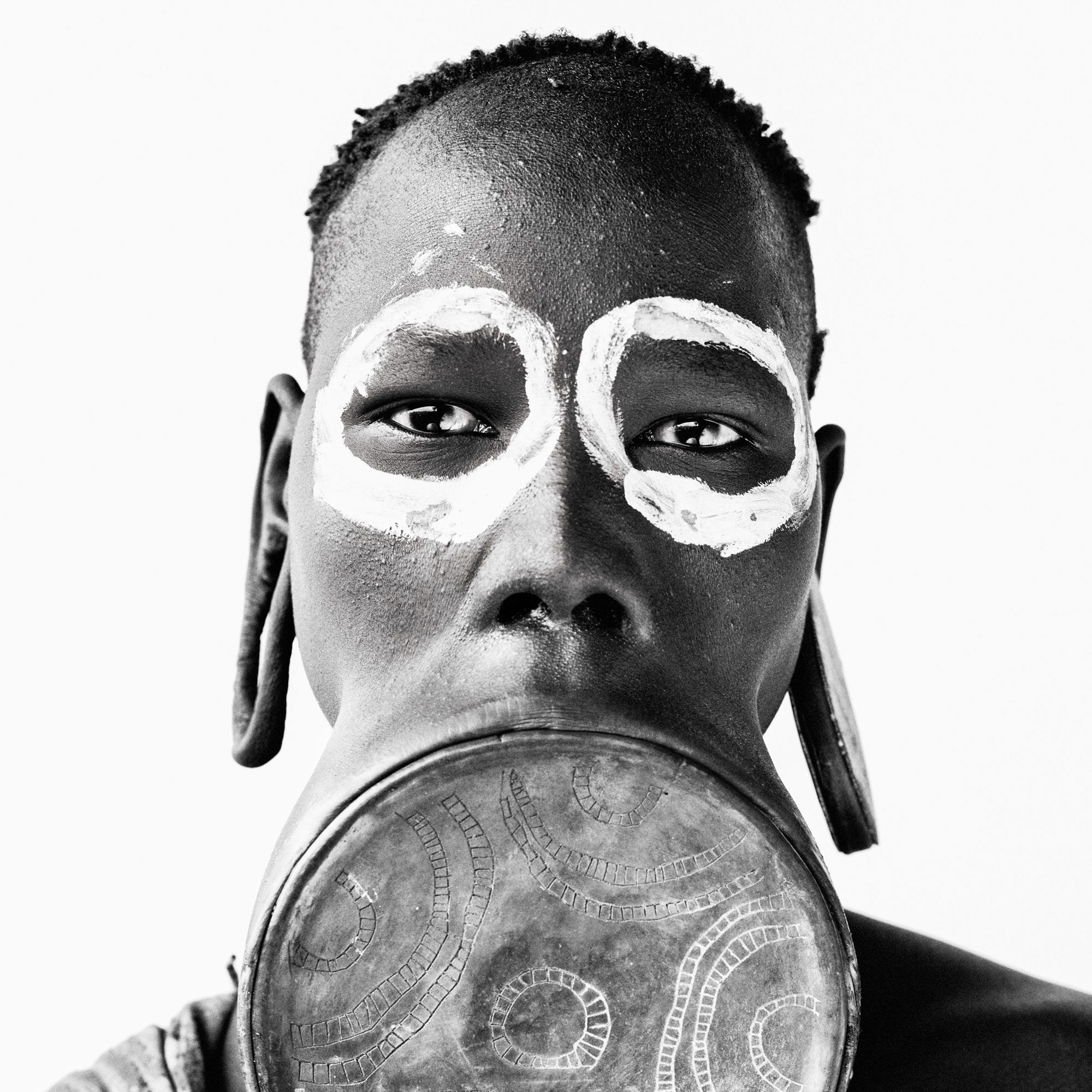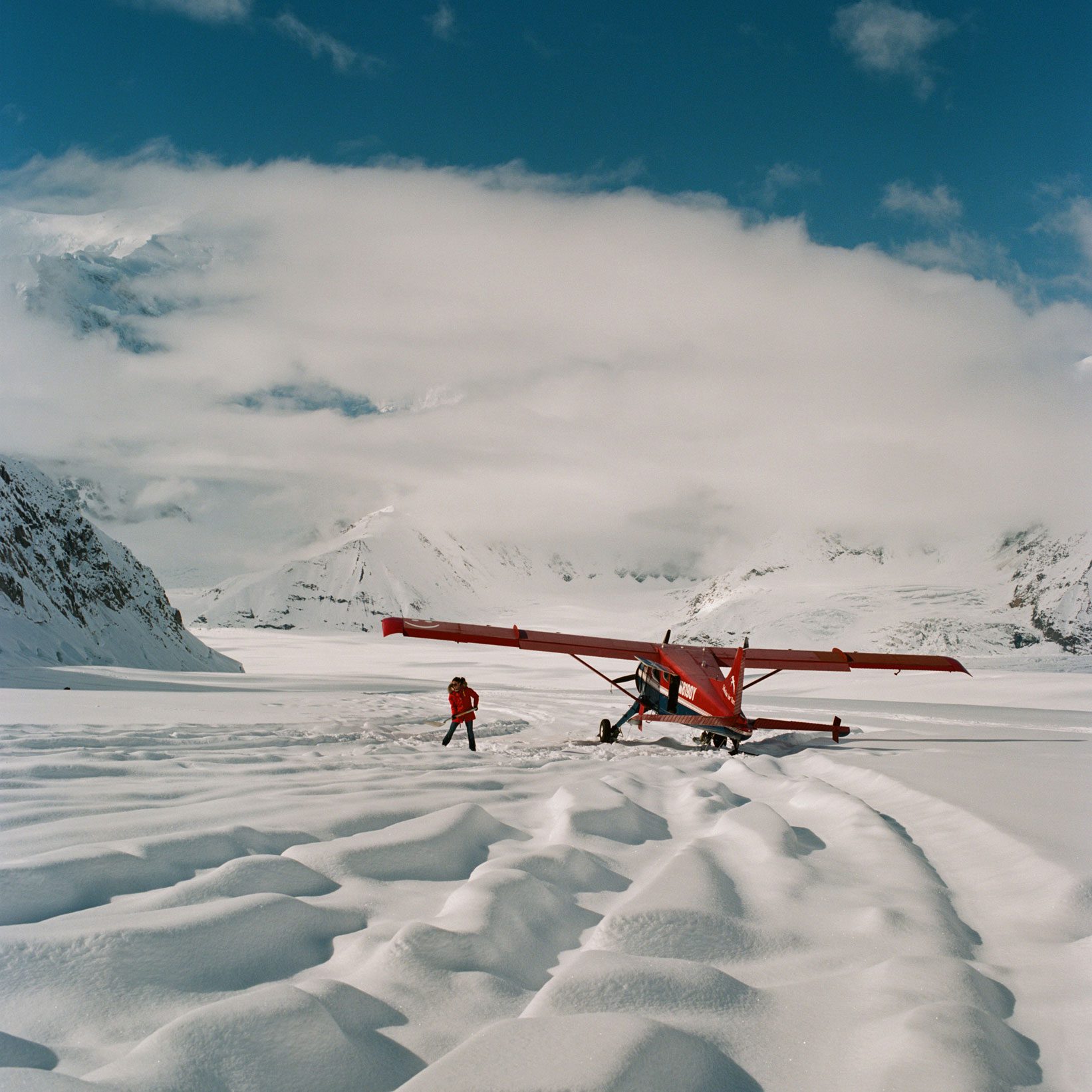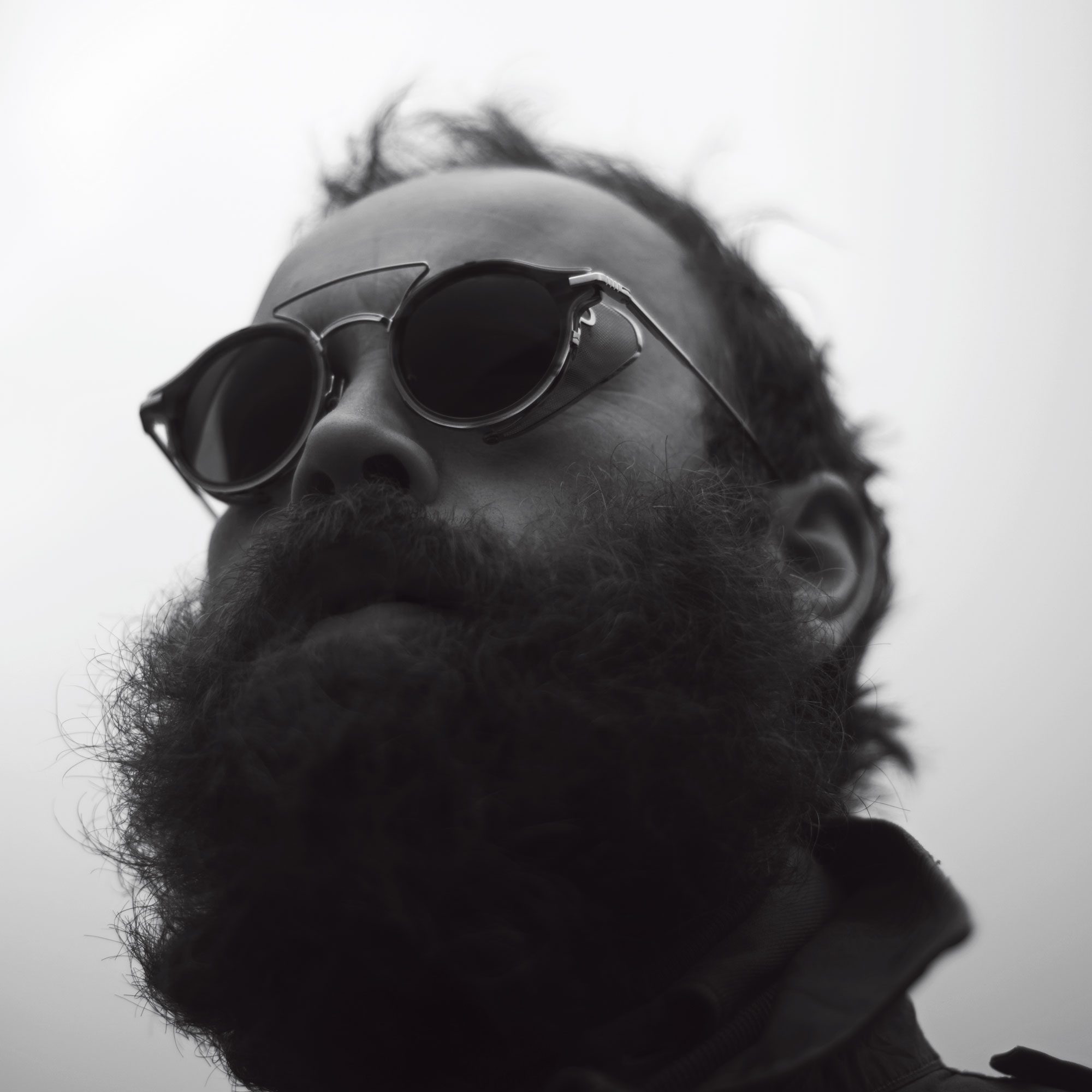Mongolia is home to a culture of falconry: a winter sport and a way of life. Against the backdrop of this unforgiving landscape, the Kazakh tradition of eagle hunting endures. From village to hunting ground, frozen lake to mountaintop: nearly 15 years after first visiting the wilds of western Mongolia, Frédéric Lagrange returns to capture the world of the eagle hunters.
I first travelled to western Mongolia during my very first trip to the country in the summer of 2001; I was still a photo assistant then. I had read about eagle hunting, an old Kazakh tradition still practiced by the Kazakh ethnic minority in Mongolia, mostly taking place during the winter months. I organised another trip in the winter of 2004 and planned to spend a few weeks following those eagle hunters. A huge snow storm upset my plans. Caught in a thick layer of snow on a frozen lake, my driver and I were luckily rescued by a military convoy that was passing by, and I ended up spending my precious days in a border military base waiting for the storm to pass.
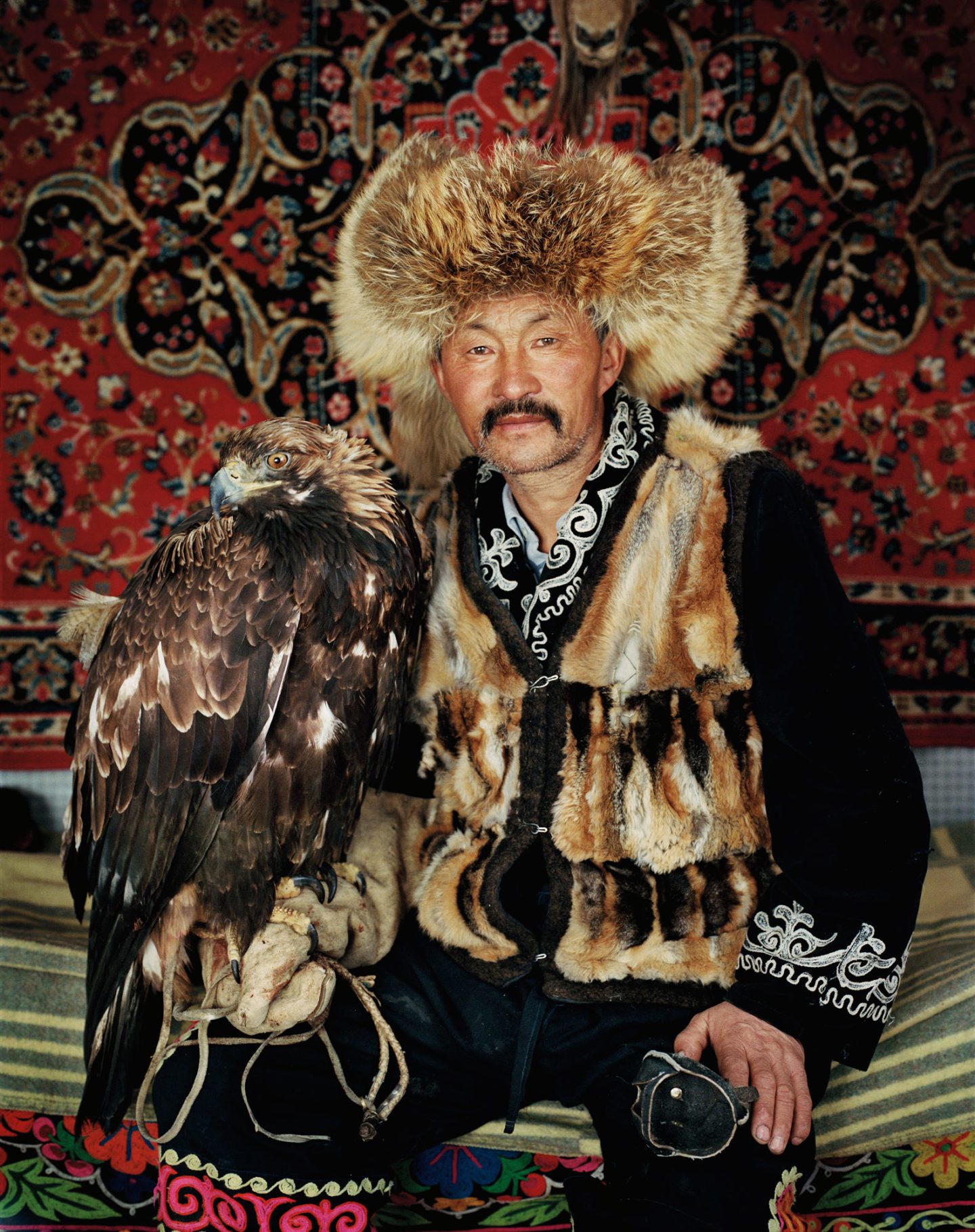
Dalaikhan at home with his 2-year-old eagle flanked by fox-skin clothes made from catches from past hunts. Female eagles are the preferred choice for hunters as they are stronger, bigger and faster. Every 13 years or so, a new bird is needed and the hunter goes to look for one, generally in July, on remote, difficult-to-access mountain cliffs. Once the hunter reaches the nest, he will select a bird; if it’s a male, he will leave it behind and search for another nest. Three-month-long training then follows before the eagle can start to hunt.
I have been back to Mongolia since, to work on a book project, but I visited different parts of the country, the north, the east and central Mongolia – still keeping in mind the unfinished task I had once started. I finally went back in December 2015 to visit the Kazakh eagle hunters, and add that final work of Mongol life that would complete my book project.
